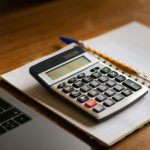The Essential Role of Mortgage Loan Fraud Audits in Safeguarding Financial Interests
Mortgage loan fraud is a significant problem in the financial world, and it can have a catastrophic impact on the stability of the housing market and the broader economy. With the increasing complexity of financial products and the growing sophistication of fraudsters, it is more important than ever for mortgage lenders to ensure that they have strong safeguards in place to detect and prevent fraudulent activity. Mortgage loan fraud audits play an essential role in this effort. These audits are designed to identify fraudulent behavior, protect the integrity of the mortgage industry, and ensure that both lenders and borrowers are operating within the law. In this blog, we will explore the concept of mortgage loan fraud audits, the different types of fraud they help detect, the audit process, and why these audits are indispensable for maintaining a healthy and secure mortgage industry.
Mortgage loan fraud is a deliberate attempt by a borrower or other party to mislead a lender into offering a loan based on false or manipulated information. Fraudulent activities can occur at various stages of the mortgage process, from the initial application to the final disbursement of funds. The consequences of mortgage fraud can be far-reaching, not only for the lenders and borrowers directly involved but also for the entire financial system. For these reasons, mortgage loan fraud audits have become an indispensable tool in identifying fraud, mitigating risks, and maintaining trust within the mortgage industry. Through a meticulous process of reviewing loan applications, supporting documents, and compliance with regulations, auditors help uncover fraudulent activities that might otherwise go undetected.
The Growing Threat of Mortgage Loan Fraud
Mortgage loan fraud is not a new phenomenon, but its prevalence has increased with the rise of complex financial products, online applications, and the growing sophistication of fraudsters. Fraudulent activities can range from simple misrepresentations to highly organized schemes designed to deceive lenders and regulators. While mortgage fraud may appear to be a victimless crime, it has far-reaching consequences, including inflated loan amounts, defaults, and foreclosures, as well as potential legal and financial repercussions for both lenders and borrowers.
The increasing volume of mortgage loans, particularly in the wake of economic downturns, has created an environment in which fraud can thrive. As the mortgage industry becomes more complex, the need for mortgage loan fraud audits becomes even more urgent. These audits are necessary to identify any inconsistencies, false information, or deviations from standard procedures that might suggest fraudulent activity. By ensuring that all parties involved in a mortgage transaction are operating honestly and within legal parameters, auditors help to minimize the risk of fraud and its potential impact on the broader economy.
Common Types of Mortgage Loan Fraud
Mortgage loan fraud manifests in various forms, each with unique challenges for auditors to detect and address. Understanding the different types of mortgage fraud is key to conducting an effective mortgage loan fraud audit. Here are the most common types of mortgage fraud that auditors look for during the audit process:
- Income and Employment Fraud: One of the most common forms of mortgage fraud involves borrowers inflating their income or misrepresenting their employment status to qualify for a loan that they would not otherwise be eligible for. Borrowers may provide fake pay stubs, falsified tax returns, or fabricated letters from employers. An audit of mortgage loanswill involve a careful review of income documentation, including pay stubs, tax returns, and bank statements, to ensure that the borrower’s reported income is legitimate and consistent with their financial history.
- Appraisal and Property Valuation Fraud: In some cases, fraudsters may manipulate the property appraisal to inflate the value of a home and secure a larger loan than the property is actually worth. This type of fraud can occur when appraisers are pressured or bribed to provide inflated valuations, or when borrowers provide false information about the property’s condition. Mortgage fraud auditors review appraisals, cross-check property values against comparable sales, and investigate any inconsistencies in the appraisal process to ensure the property value is accurate.
- Occupancy Fraud: Occupancy fraud occurs when a borrower falsely claims that the property being purchased will be their primary residence, when in reality, the borrower intends to use it as a rental property or a vacation home. This type of fraud is often motivated by the desire to obtain more favorable loan terms, as primary residences typically receive lower interest rates than investment properties. Mortgage fraud auditors verify occupancy status by reviewing utility bills, tax documents, and other records to ensure that the borrower’s stated intention aligns with the actual use of the property.
- Straw Borrower Fraud: Straw borrower fraud occurs when someone who does not intend to occupy the property applies for a mortgage in their name to help someone else who might not qualify for the loan. This type of fraud often involves individuals with poor credit or financial histories using a “straw borrower” to obtain a mortgage. Mortgage loan fraud auditscan identify straw borrower scenarios by reviewing the borrower’s financial records, credit histories, and other documents to ensure that the person listed as the borrower is the true party behind the loan.
- Identity Theft: Identity theft is another serious form of mortgage fraud, where a fraudster uses another person’s identity to apply for a loan. This can involve stealing personal information such as Social Security numbers, birth dates, and bank account details to create fake identities and secure mortgages. Mortgage loan fraud auditscan help detect identity theft by verifying the borrower’s personal details and conducting background checks to ensure the information matches public records and known data.
How Mortgage Loan Fraud Audits Work
A mortgage loan fraud audit is a thorough review of the loan file and supporting documentation to identify any irregularities or potential signs of fraud. Auditors follow a structured process to examine each aspect of the mortgage transaction, from the loan application to the final disbursement of funds. The audit process typically involves several key steps:
- Document Verification: The first step in the audit process is to review all documents submitted by the borrower, including income verification forms, tax returns, bank statements, and property appraisals. Auditors will verify that these documents are authentic, accurate, and consistent with other information in the loan application. Any discrepancies or signs of falsification will be flagged for further investigation.
- Income and Employment Review: Auditors will closely examine the borrower’s income and employment history to ensure that the information provided is consistent with their financial records. This may involve cross-referencing pay stubs, tax returns, and bank statements to verify that the borrower’s reported income aligns with their actual earnings.
- Property and Appraisal Review: In this step, auditors assess the property’s appraised value to ensure that it accurately reflects current market conditions and comparable sales in the area. If the property’s value appears inflated or inconsistent with other market data, auditors will flag the appraisal for further review.
- Regulatory Compliance Check: A key component of any mortgage fraud audit is ensuring that the lender has complied with all applicable regulations, including those related to disclosure, fair lending practices, and loan origination procedures. Auditors check that the lender followed proper procedures and adhered to federal and state laws during the loan approval process.
- Red Flag Identification: Throughout the audit, auditors will look for any “red flags” that may suggest fraudulent activity. These could include inconsistencies in the borrower’s financial information, unverified documents, or patterns of behavior that are indicative of fraud. When auditors identify potential red flags, they will conduct a more in-depth investigation to determine if fraud has occurred.
- Reporting and Recommendations: After completing the audit, the auditor will compile a comprehensive report detailing their findings, including any fraudulent activity detected during the review process. The report will outline the specific issues identified, provide recommendations for corrective action, and offer advice on how to prevent similar issues from occurring in the future.
Why Mortgage Loan Fraud Audits Are Critical for Lenders
Mortgage loan fraud audits offer several key benefits for lenders and financial institutions. By conducting regular audits, lenders can reduce the risk of fraud, ensure compliance with regulatory requirements, and protect their financial interests. Here are some of the key reasons why mortgage loan fraud audits are critical:
- Risk Mitigation: Fraudulent loans can result in significant financial losses for lenders. By conducting thorough audits, lenders can identify and prevent fraudulent loans before they cause damage. Early detection of fraud helps mitigate the risk of defaults, chargebacks, and other financial consequences.
- Regulatory Compliance: Mortgage lenders are subject to numerous regulations, including the Truth in Lending Act (TILA) and the Real Estate Settlement Procedures Act (RESPA). A mortgage loan fraud audithelps ensure that the lender is in compliance with these regulations and that all required disclosures and procedures have been followed.
- Reputation Protection: Mortgage fraud can seriously damage a lender’s reputation. By conducting fraud audits, lenders demonstrate their commitment to maintaining a secure and transparent lending environment. This helps build trust with borrowers, investors, and regulators, ultimately protecting the lender’s long-term reputation.
- Financial Security: Fraudulent loans can result in significant financial losses for lenders, particularly if they lead to defaults or legal disputes. Regular mortgage loan fraud audits help protect lenders from such risks by identifying and addressing fraudulent activity before it causes financial harm.
Conclusion
Mortgage loan fraud is a serious issue that can undermine the integrity of the mortgage industry and lead to significant financial losses. Mortgage loan fraud audits play a crucial role in detecting fraud, mitigating risks, and ensuring that lenders comply with regulations. By conducting thorough audits, lenders can protect their financial interests, prevent fraud, and maintain the trust of their clients and stakeholders. If you are a lender or financial institution looking to protect your business from the risks of mortgage fraud, it is essential to implement regular mortgage loan fraud audits.
Contact us today at (877)-399-2995 or visit Mortgage Audits Online to learn more. Secure your financial future with confidence!




